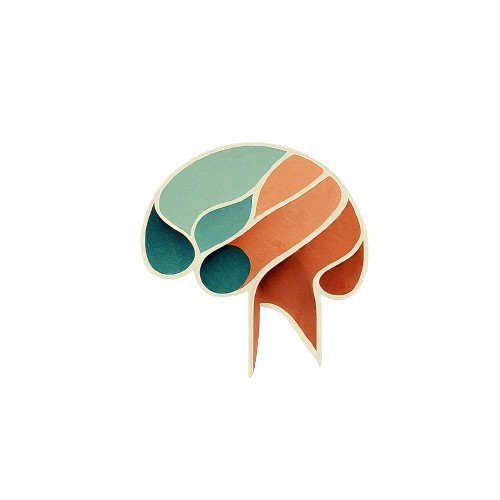The Promise of Psilocybin in Treating Depression
Depression is a pervasive mental health condition affecting millions worldwide. According to the National Institute of Mental Health, an estimated 7.1% of all adults in the U.S. experienced at least one major depressive episode in the previous year. While traditional treatments like antidepressants and psychotherapy can be effective, they don’t work for everyone. This has led researchers to explore alternative approaches, including the use of psychedelic substances like psilocybin.
What is Psilocybin?
Psilocybin is a naturally occurring psychedelic compound found in over 200 species of mushrooms, commonly known as “magic mushrooms.” When ingested, psilocybin is converted to psilocin in the body, which then acts on serotonin receptors in the brain, producing profound alterations in consciousness, including:
- Euphoria and mood enhancement
- Vivid sensory hallucinations
- Distortions in the perception of time and space
- Deep introspective and spiritual experiences
- Enhanced creativity and novel thinking patterns
The effects of psilocybin typically last between 4 to 6 hours, with the peak experience occurring around 2 to 3 hours after ingestion.
The Resurgence of Psychedelic Research
The use of psychedelics in medicine and spiritual practices is not new. Many indigenous cultures have used psilocybin-containing mushrooms for centuries in traditional healing and religious ceremonies. However, the modern scientific exploration of psilocybin has had a complex history:
- 1940s-1960s: The discovery of LSD in 1943 sparked the first wave of psychedelic research. Thousands of studies were conducted on LSD, psilocybin, and other psychedelics, exploring their potential in treating various mental health conditions.
- 1970: The Controlled Substances Act was passed in the United States, classifying psilocybin as a Schedule I drug. This classification, indicating “high potential for abuse and no recognized medical value,” effectively halted most psychedelic research.
- 1990s-2000s: A gradual renewal of interest in psychedelic research began, with scientists advocating for the reevaluation of these substances’ potential therapeutic benefits.
- 2006: The U.S. Supreme Court ruled in favor of a religious group’s right to use ayahuasca, another psychedelic substance, setting a precedent for the religious use of psychedelics. In the same year, researchers at Johns Hopkins University gained approval to investigate the potential of psilocybin as a treatment for various conditions.
- Present: Numerous clinical trials are underway, exploring the use of psilocybin in treating depression, anxiety, addiction, and other mental health disorders.
Psilocybin-Assisted Therapy: A New Approach to Mental Health
How Does It Work?
Psilocybin-assisted therapy is not simply about administering the drug. It’s a carefully structured process that combines the use of psilocybin with professional psychotherapy. The typical process includes:
- Preparation Phase:
- Patients undergo thorough medical and psychological screening.
- Therapists work with patients to set intentions for the experience.
- Patients are educated about what to expect and how to navigate challenging experiences.
- Psilocybin Session:
- The substance is administered in a controlled, comfortable environment.
- Patients are supervised by trained professionals throughout the experience.
- The session typically lasts 6-8 hours, during which patients are encouraged to focus inward and explore their thoughts and emotions.
- Integration Phase:
- Following the psilocybin session, patients work with therapists to process and make sense of their experience.
- This phase is crucial for translating insights gained during the session into meaningful changes in daily life.
- Multiple integration sessions may be conducted over several weeks or months.
The Science Behind Psilocybin’s Effects
Psilocybin’s impact on the brain is complex and not yet fully understood. However, research has revealed several key mechanisms:
- Serotonin Receptor Activation: Psilocybin primarily acts on the 5-HT2A serotonin receptor, which is involved in mood regulation, cognition, and perception.
- Default Mode Network (DMN) Suppression: Psilocybin appears to reduce activity in the brain’s DMN, a network associated with self-referential thinking and rumination. This may help break patterns of negative self-focus common in depression.
- Increased Brain Connectivity: Studies using fMRI have shown that psilocybin increases communication between different brain networks that don’t typically interact. This may facilitate new perspectives and thought patterns.
- Neuroplasticity: There’s evidence that psilocybin may promote the growth of new neural connections, potentially allowing for more flexible thinking and behavior.
These effects may help explain why psilocybin can lead to rapid and sometimes long-lasting changes in mood and outlook.
Research Findings: A Ray of Hope
Recent clinical trials have shown promising results for psilocybin-assisted therapy in treating depression:
Cancer-Related Anxiety and Depression
A landmark 2016 study at Johns Hopkins University found that a single dose of psilocybin produced substantial and sustained decreases in depression and anxiety in patients with life-threatening cancer. The effects were still evident six months after treatment, with participants reporting improved quality of life, increased optimism, and reduced death anxiety.
Treatment-Resistant Depression
A 2021 study published in the New England Journal of Medicine compared psilocybin with a common antidepressant, escitalopram. The results showed that psilocybin was at least as effective as the antidepressant, with a more rapid onset of action and fewer side effects.
Rapid and Lasting Effects
One of the most striking aspects of psilocybin therapy is the speed and durability of its effects:
- A 2020 study in JAMA Psychiatry found that 67% of participants experienced a more than 50% reduction in depression symptoms after just two psilocybin sessions.
- 54% of participants were considered in remission (no longer depressed) four weeks after treatment.
- A long-term follow-up study showed that many participants maintained improvements for up to five years after treatment.
Beyond Depression
While depression has been the focus of much research, studies are also exploring psilocybin’s potential in treating:
- Anxiety disorders
- Addiction (including alcohol and tobacco dependence)
- Obsessive-compulsive disorder (OCD)
- Post-traumatic stress disorder (PTSD)
Important Considerations and Risks
While the potential of psilocybin therapy is exciting, it’s crucial to understand the risks and limitations:
Potential Adverse Effects
- “Bad trips”: Some individuals may experience intense anxiety, fear, or confusion during the psilocybin session.
- Physical side effects: Nausea, headaches, and temporary increases in blood pressure and heart rate can occur.
- Psychosis: In rare cases, psilocybin may trigger or exacerbate psychotic symptoms in vulnerable individuals.
Contraindications
Psilocybin therapy is not suitable for everyone. It may be contraindicated for individuals with:
- A personal or family history of psychosis or bipolar disorder
- Certain heart conditions
- Severe liver disease
- Pregnancy or breastfeeding
Importance of Set and Setting
The effects of psilocybin are heavily influenced by the user’s mindset (“set”) and the environment (“setting”). This is why it’s crucial that psilocybin is only used under professional supervision in a controlled, supportive setting.
Legal Status
Despite its promising medical potential, psilocybin remains a Schedule I controlled substance in the United States, making it illegal for general use. However, some cities and states have begun to decriminalize or legalize its use under certain circumstances.
The Future of Psilocybin Therapy
The landscape of psilocybin research and regulation is rapidly evolving:
FDA Breakthrough Therapy Designation
In 2018 and 2019, the FDA granted “breakthrough therapy” status to psilocybin-assisted therapy for treatment-resistant depression and major depressive disorder, respectively. This designation is intended to expedite the development and review of drugs for serious conditions.
Ongoing Clinical Trials
Numerous phase 2 and phase 3 clinical trials are currently underway, investigating psilocybin’s efficacy for various conditions. These larger-scale studies will be crucial in determining whether psilocybin therapy becomes an approved treatment option.
Potential for Rescheduling
As evidence for psilocybin’s medical value accumulates, there’s growing pressure to reconsider its Schedule I status. Some researchers have suggested it should be reclassified as Schedule IV, alongside substances with accepted medical uses and low potential for abuse.
Training and Infrastructure
In anticipation of potential approval, efforts are underway to develop training programs for therapists and establish guidelines for the safe administration of psilocybin therapy.
A New Chapter in Mental Health Treatment
Psilocybin-assisted therapy represents a paradigm shift in our approach to treating depression and other mental health conditions. By combining the transformative potential of psychedelic experiences with the support and guidance of psychotherapy, this treatment modality offers hope to those who have found little relief from traditional methods.
As research progresses, we may be on the cusp of a new era in mental health care—one that integrates ancient wisdom with cutting-edge neuroscience to address the root causes of psychological distress. While challenges remain, including regulatory hurdles and the need for larger clinical trials, the initial results offer a compelling reason for cautious optimism.
For those struggling with depression, the emergence of psilocybin therapy as a potential treatment option may represent a new light at the end of what has often been a long, dark tunnel. As we continue to explore and understand the healing potential of psilocybin, we move closer to a future where more people can find relief from the burden of depression and rediscover joy, meaning, and connection in their lives.
It’s important to remember that while the potential of this therapy is exciting, it is still an area of ongoing research. Anyone considering this treatment should consult with mental health professionals and stay informed about the latest developments in this rapidly evolving field. The journey towards better mental health is often complex, but with continued research and open-minded exploration of new treatment modalities like psilocybin therapy, we are expanding the toolbox of options available to those in need.



